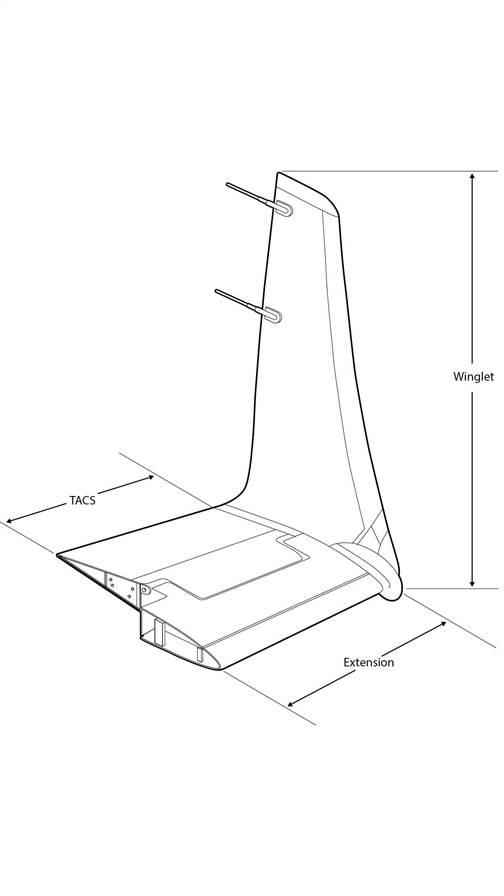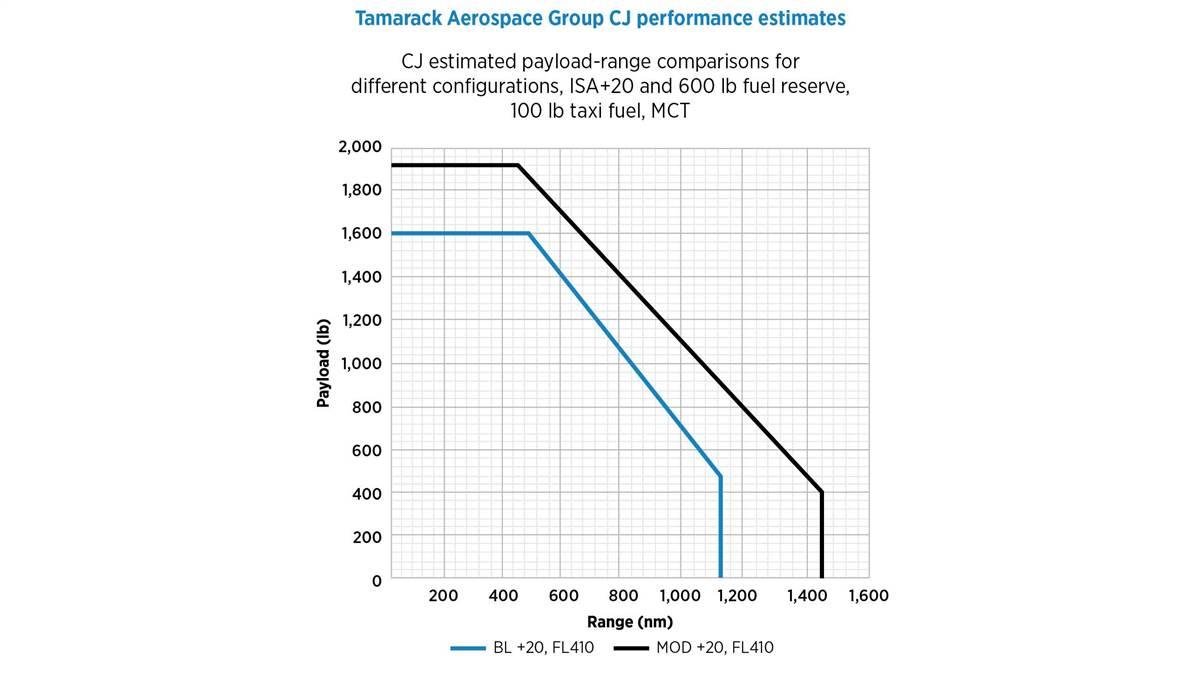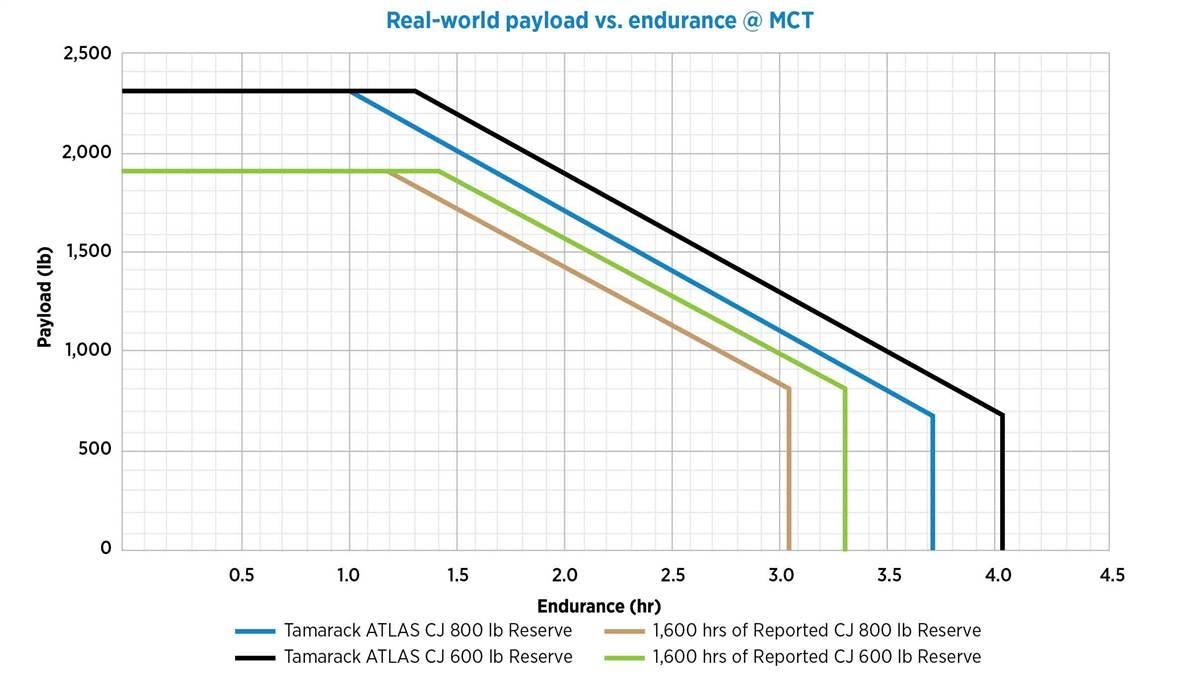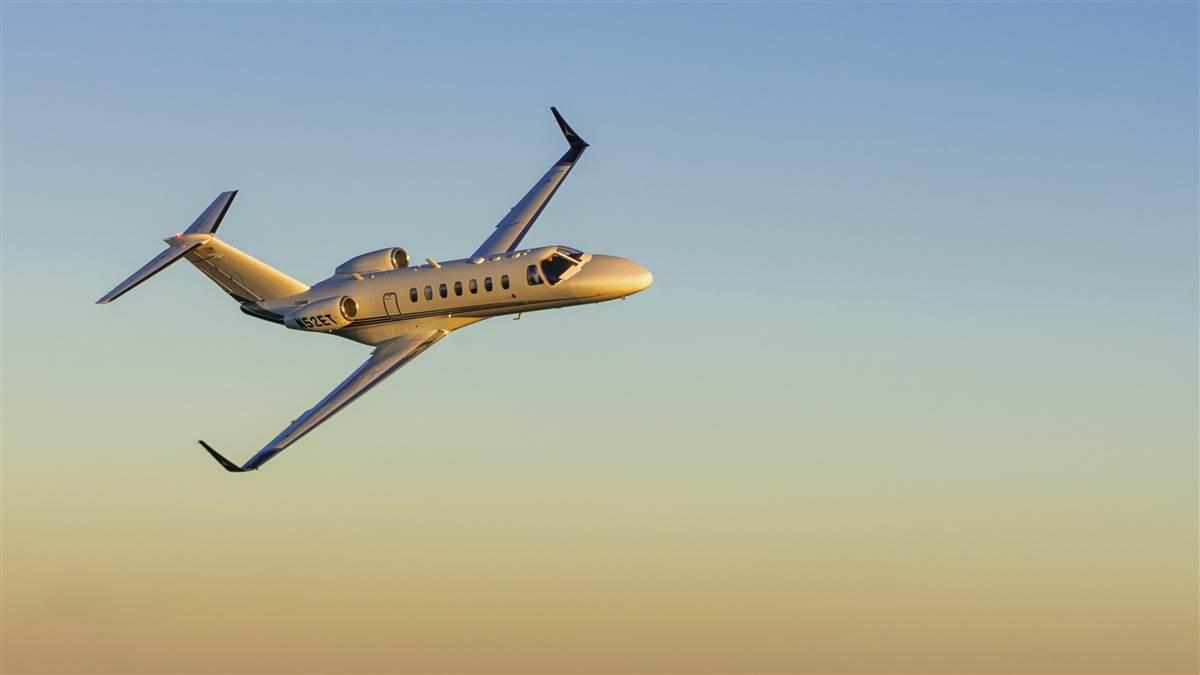Tamarack takeoff
A new disrupter in the retrofit market

Winglets fall into this category as well. Once, some considered them trendy ornaments, creatures of marketing departments. Not anymore. Instead, we learned that winglets provide huge benefits by reducing a wing’s induced drag—the drag produced by lift. Without winglets, wingtip vortices flourish when high-pressure air from beneath a wing freely curls up and around the low-pressure, lift-producing air above it. The vortices create drag, but winglets cut that drag by smoothing the airflow. Winglets also fool the wing into behaving as though it has a greater aspect ratio—the ratio between a wing’s chord and its span. The greater the aspect ratio, the more lift. For example, sailplanes eke more lift out of their airfoils because their wings have longer spans and higher aspect ratios.
 Tamarack Active Camber Surfaces act like small ailerons that automatically “turn off” the winglets when loads increase in turbulence, or any other time loads increase.It follows that anyone wanting to boost fuel economy and increase climb rates would stretch wingspan and add winglets. That sounds simple, but it’s not. Increasing span means increasing weight at the wing tips, which in turn means increased bending moments at the wing root, which in turn requires a reduction in the airplane’s zero fuel weight (the weight of the airplane minus the weight of its fuel load).
Tamarack Active Camber Surfaces act like small ailerons that automatically “turn off” the winglets when loads increase in turbulence, or any other time loads increase.It follows that anyone wanting to boost fuel economy and increase climb rates would stretch wingspan and add winglets. That sounds simple, but it’s not. Increasing span means increasing weight at the wing tips, which in turn means increased bending moments at the wing root, which in turn requires a reduction in the airplane’s zero fuel weight (the weight of the airplane minus the weight of its fuel load).
Airplanes designed with winglets from scratch compensate for these tradeoffs by adding structural weight to handle the extra flight loads. But you couldn’t add span or bolt winglets on an airplane not originally designed for them without providing a means to alleviate the extra loads, and stay within the original flight- and limit-load envelopes set by the manufacturer during certification.
Which is exactly what Tamarack Aerospace Group is doing with its Active Technology Load Alleviation System (ATLAS) supplemental type certificate (STC) for Cessna’s CJ, CJ1/ CJ1+, M2, CJ2/ CJ2+, and CJ3/CJ3+ series of Citation business jets. The Tamarack modification adds a wing surface extension to the original wing, plus winglets. To keep loads under control, the STC’s Tamarack Active Camber Surfaces (TACS) act like small ailerons that automatically and autonomously kill lift and “turn off” the winglets when loads increase in turbulence, while maneuvering, or any other time when loads increase. Solid-state accelerometers and other proprietary sensors mounted in the fuselage constantly monitor load and gust factors, airspeed, flap settings, and activate the TACS, so pilots—and autopilots—never sense any corrections. System redundancies kick in should an anomaly occur, and if the TACS fail completely, an annunciator signals to the pilot that airspeed should be reduced to safe limits. Should a TACS jam, aileron trim can counter its effects.
 But the chance of that is rare, says Tamarack Aerospace’s founder and CEO Nick Guida. “The system has a one times ten to the negative-eight reliability,” he said. “That works out to about once in every billion flight hours.”
But the chance of that is rare, says Tamarack Aerospace’s founder and CEO Nick Guida. “The system has a one times ten to the negative-eight reliability,” he said. “That works out to about once in every billion flight hours.”
The Tamarack mod is attracting attention in the Citation community. Guida says that the ATLAS boosts fuel efficiencies across the CJ series, which have the effect of adding an extra 45 minutes of endurance and concurrent increases in range. Times on direct climbs to fuel-saving altitudes are down, hot-and-high performance improves, and there’s even a smoother ride in turbulence. “Basically, the system works best whenever coefficients of lift are high, like takeoffs, climbs, and in cruise flight at high altitudes,” Guida said. Other advantages include improved single-engine climb and drift-down performance, plus better high-altitude handling characteristics. The mod also increases the fatigue life of the wings due to the lower bending moments, reduces Dutch roll cycles, and does away with a dispatch limitation if the yaw damper is inoperative. Last but not least, there are increases in maximum zero fuel weight limitations, which allow higher payloads. In the CJ2, for example, payload increases by 800 pounds; in the CJ3, 400 pounds.
“Basically, the mod really makes sense for any airplane that has to step-climb to a good cruise altitude, and cruises at its maximum operating altitude at a high angle of attack.”—Paul Hathaway, TamarackThen there is the resale aspect of the Tamarack system. The aircraft valuation publication Vref tacks a $219,000 premium to the retail value of a pre-owned CJ if it has Tamarack’s mod.
AOPA Pilot flew Tamarack’s testbed CJ3 and we found the airplane’s stability at altitude impressive. It was easy to hand-fly at its maximum operating altitude of 45,000 feet, and any pilot-induced pitch or yaw disturbances were quickly damped—even though the yaw damper was disengaged. Single-engine climbs performed at 11,000 feet turned in 1,000- to 1,500-fpm climb rates under slightly higher than ISA temperatures. And in steep turns or turbulence you could see the TACS pop up the instant the load sensors detected the need. “The CJ3 is a 1,700-nautical-mile airplane, day in, day out,” Guida said. “But with the wing extension and winglets, that range goes to a reliable 2,100 nm.” To prove it, he once flew the CJ3 from Paris, Texas, to Paris, France, with only one stop to refuel.
So far, the Tamarack mod is being installed at Citation service centers, where down time varies from two to three weeks. Typically, the work is performed the same time other large work packages are carried out—paint jobs, ADS-B installs, and major inspections. By the time you read this, independent maintenance and repair organizations in the United States and Europe may also have been authorized to install the ATLAS.
Another of Tamarack’s goals is to secure Textron’s cooperation in adding the ATLAS STC to the type certificates of current-production Citations. Under this arrangement, the modification would be included as original equipment—meaning that customers could buy Tamarack-equipped airplanes right off the factory assembly line. Guida says Textron is a big supporter, which makes sense, as the mod would enhance and refresh the Citation product line.
By now, some 35 CJs will have had the Tamarack installation, and orders are coming in for CJ2s and CJ3s—the next for certification, which should occur by February 2018. After that, look for the Citations 560XL, XLS, and XLS+ to be the next airplanes certified with the Tamarack system, and the Citation Mustang won’t be far behind—Tamarack has 30 letters of intent for the Citation Mustang. The Citations 560 Ultra and Encore will be certified under a partnership between Tamarack and Innova Aerospace.
After those models, Embraer’s Phenom 100 and Bombardier’s 604 and 605 large-cabin jets will be up for certification. As of this writing, 38 Phenom 100 owners had signed letters of intent to move ahead with the Tamarack system.
“Basically, the mod really makes sense for any airplane that has to step-climb to a good cruise altitude, and cruises at its maximum operating altitude at a high angle of attack,” said Paul Hathaway, Tamarack’s marketing director.
The company’s market reach won’t end with business jets. Guida showed off an ATLAS-style mod at last year’s National Business Aviation Association convention that featured articulating winglets that toed in and out for takeoffs and landings. These winglets were huge, and had stall strips on their leading edges to defeat any side side-loaded gusts.
“This concept is aimed at airliners,” Guida said, trying to be vague. “You know, those single-aisle jobs that have 150 to 170 seats or so.” We’re talking 737s and A320s. Tamarack seems on the verge of going big-time.
Email [email protected]



 Prices*
Prices*

